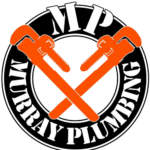Plumbing emergencies cause stress and damage. Homeowners need to act quickly to reduce costs and avoid bigger problems. This article will explain the three most common plumbing emergencies. It will also explain how to recognize them and what steps to take.
1. Burst Pipes
What is a Burst Pipe? A burst pipe happens when water pressure builds up and causes the pipe to crack or split. Cold weather, corrosion, or old pipes are common reasons.
Signs of a Burst Pipe
- Sudden drop in water pressure
- Water stains on walls or ceilings
- Flooding in certain areas
- Unusual noises in the plumbing system
What to Do
- Turn off the main water supply immediately.
- Shut off electricity in affected areas to avoid hazards.
- Drain faucets to reduce pressure.
- Call a plumber right away.
- Clean up standing water to prevent mold growth.
How to Prevent Burst Pipes
- Insulate exposed pipes during winter.
- Replace old or corroded pipes.
- Keep a steady temperature indoors.
- Run water occasionally during extreme cold.
2. Clogged Drains and Toilets
What is a Clogged Drain or Toilet? A clogged drain or toilet stops water from flowing. It happens when hair, grease, soap, or foreign objects block the pipes.
Signs of a Clogged Drain or Toilet
- Water backs up in sinks, tubs, or toilets.
- Slow drainage.
- Gurgling sounds in drains.
- Bad smells from drains.
What to Do
- Use a plunger to clear small clogs.
- Avoid using chemical drain cleaners, which can damage pipes.
- If the clog persists, call a plumber.
- Stop using the affected fixture until the problem is fixed.
How to Prevent Clogs
- Use drain strainers.
- Do not pour grease down the sink.
- Dispose of hygiene products in the trash.
- Regularly flush drains with hot water.
3. Leaky Water Heater
What is a Leaky Water Heater? A water heater leak occurs when cracks or faulty valves allow water to escape. This can lead to water damage and loss of hot water.
Signs of a Leaky Water Heater
- Water pooling around the heater.
- Rust or corrosion on the tank.
- Strange noises from the heater.
- Inconsistent water temperature.
What to Do
- Turn off the power supply to the heater.
- Shut off the water supply.
- Drain the water heater to prevent further leaks.
- Contact a plumber.
How to Prevent Water Heater Leaks
- Inspect the water heater regularly.
- Replace old water heaters before they fail.
- Flush the tank every six months.
- Check the pressure relief valve often.
Other Quick Plumbing Emergency Tips
Know Where Your Shut-Off Valves Are Learn where the main water shut-off valve is located. In an emergency, quick action limits damage.
Keep Emergency Supplies Ready Have towels, buckets, and a wet/dry vacuum available. These items help clean up quickly.
Maintain Regular Plumbing Checks Schedule annual plumbing inspections. A plumber can detect problems before they become emergencies.
Conclusion
Plumbing emergencies can happen at any time. Burst pipes, clogged drains and toilets, and water heater leaks are the most common issues. Homeowners should know how to identify these problems quickly. Acting fast can prevent further damage and save money. Preventative maintenance reduces the chance of emergencies. Know your plumbing system, stay alert, and contact a professional when needed.
